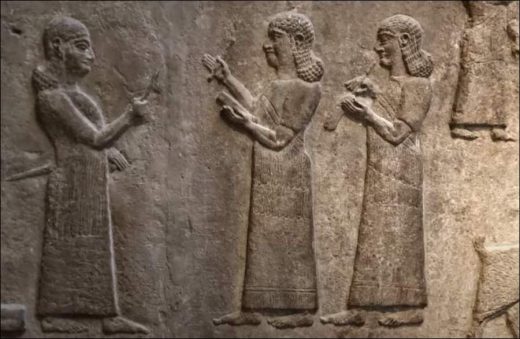We’re exploring Sumerian language, maybe the most mysterious language out there, the language of the people who created the first civilization and the first writing system and welcome to the Sumerian language.
Sumerian was the language of an ancient and lost civilization forgotten for 2000 years and rediscovered only in the 19th century Sumerian was spoken in southern Mesopotamia between 5th and 2nd millennium bc around the second millennium BC. The spoken language was completely replaced by Acadian a semitic language from northern Mesopotamia but Sumerian was preserved as a scholarly language for some time.
It functioned similarly to Latin in middle age Europe it was studied in schools and was used for various types of texts from official documents to religious hymns. The last examples of Sumerian writings are dated from 100 BC who were the Sumerians that’s a hard question as Sumerians themselves were apparently not very interested in who they were and where they came from so they didn’t really write anything about it
Sumerians never even call themselves like that this term comes from the Acadian word Shumero and this is how the Acadians call the area of southern Mesopotamia Sumerians used to call this land Kenger and it’s still a big question in linguistics as to how Kenger became as a transition from Kurt is very unusual. Sumerians actually called themselves Sangeer which literally translates as blackhead and there are many hypotheses on what that could actually mean the first intuition is that Sumerians were literally black-headed like Africans or Dravidians the latter inhabited ancient and modern Hindustan and possibly even ancient iran so not too far away.
However on their own images Sumerians don’t look particularly dark and their features don’t seem much different from the neighboring semitic people though of course these images are very standardized but still if they had dark skin maybe they would have shown it maybe but the second hypothesis is that the Sumerians come from somewhere where people surrounding them had a considerably lighter skin color so they were black headed compared to them and the third hypothesis claims that the name blackhead it doesn’t refer to skin color but to the status
It was a way to describe civilized people as opposed to barbarians interestingly similar opposition exists among the Sino Tibetans where people call themselves black-headed as opposed to the red-faced those who did not know king rulership it could be that the sumerian name had a similar connotation but wait are then sumerians and Sino-Tibetans the ancestors of modern Tibetans and Chinese related actually for some time Sumerian language was included into the Sino-Caucasian hypothesis which links several language families into a microfamily.
It has a connection older than 10.000 years but recently Sumerian was excluded from this hypothesis as there was no linguistic proof to back it so maybe some Proto-Sumerians were in contact with proto-cine Tibetans and that’s why thave some things in common another curious similarity is the Sumerian word for god and sky dingir which is very similar suspiciously similar to the word for sky of some central asian tribes Tengir and the Chinese word for sky chan Sumerians themselves mention only two places outside Mesopotamia.
Firstly is dilmoon a land where according to them all the people all the humanity came from and which is now identified as the island of Bahrain and we do find Sumerian artifacts from the 4th millennium BC there so maybe Sumerians colonize southern Mesopotamia from the sea and also got bahrain in the process the second location is Aratia, a land somewhere to the east where they had the same Sumerian names and prayed to the same gods and which was known as the land of skilled artisans.
Of course we have no clue as to where exactly this was situated could have been Iran could have been india inking Sumerians to the mysterious in his river civilization in reality the only thing that we can almost confidently say about Sumerian origins is that they were not probably native to mesopotamia what’s more and now it’s really shocking information that it’s even possible that Sumerians didn’t create the first civilization, the first agricultural society in this area is called the Ubait culture these were also the people who established the famous Sumerian cities there or rukh lagash many others it highly probable that these obeyed people weren’t Sumerians as these city names don’t seem to have a Sumerian etymology.
Right now researchers have identified at least two possible pre-Sumerian languages in this area one of them was nicknamed the Banana language as the known words from this language have the same syllable structure as the word banana zababa kubaba inanna aruru these are names of some Sumerian gods.
Sumerian on the other hand was predominantly a monosyllabic language what could be even a bigger perspective shift is that the first writing system the thing that Sumerians are most famous for maybe was not even invented by them but again by the obeyed people needless say that no one has a clue who these hypothetical obedience could have been the earliest writing system also known as cuneiform was actually pictograms or simplified images of a war.
This time of writing appeared in the 4th millennium BC in the ancient city of Uruk the writings on the clay tablets from that time are purely utilitarian and administrative like how many sheep were given to the king and so on even the word order was not transmitted as in the spoken language as their writing was only needed to say who did what or gave what to who with time though Sumerian civilization developed and so did their writing system.
Next Page: Delving deeper into the Sumerian language.
Visits: 42





